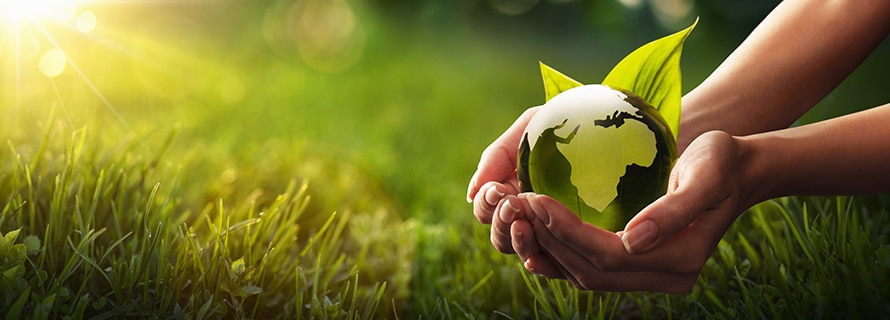Consideration for the Environment
- Sustainability Home
- Top Message
- Vision and Materiality
- Sustainability
Promotion System -
Consideration for the Environment
-
Improvement of Working Environments in the Supply Chain
-
Dependable Products and Service
-
Healthcare and Innovation
-
Social contribution
-
Sound governance
- External Evaluations
and Initiatives
Theme
For Decarbonization and the Spread of Recyclable Eyewear

In order to realize its vision, “Magnify Life,” through its business activities, JINS aims to create new value by developing environmentally friendly products and services. We consider responses to climate change, utilization of limited natural resources, energy conservation, and waste reduction as important issues, and are making various efforts to address them in our business activities. In particular, plastic, which is used as a material for eyewear, has become a major issue in a social situation that is moving toward the elimination of plastic, and we are continuing our efforts to reuse and recycle.
-
Consideration for climate change
- Policy for Responding to Climate Change
- Reductions in Greenhouse Gas (CO2) Emissions
- Switching to Renewable Energy in Stores
- Main Initiatives
-
Circulation of natural resources
- Policy on Circulation of Natural Resources
- Switching to Eyewear Made from Sustainable Materials
- Recycling of Demo Lenses
- Reducing Various Waste and Recycling
- Main Initiatives
-
Environmental management in the supply chain
- Policy on Management in the Supply Chain
- Legal Compliance in Hazardous Chemical Substances
- Development of a Traceability System for the Supply Chain
- Determining the State of Water Resource Usage and Establishing Goals
- Main Initiatives
-
Promotion of biodiversity
- Biodiversity policy
- Stores in coexistence with the environment
- Main Initiatives
Medium- to Long-term Goal
Create circulation
A future without consumption
There are a number of environmental issues on this planet, with the economic activities of humans at the root. If this is the case, can we make a change in the way people consume? We would like to address environmental issues with the attitude of challenge that is typical of JINS. First of all, to achieve carbon neutrality. To increase the ratio of renewable energy to 100% in order to achieve virtually zero CO2 emissions within the Group. At the same time, for products, to promote zero waste products and shift to 100% recyclable eyewear. Regarding the environment as well, we will continue to try to create “new standards.”

Consideration for climate change
- Reduce greenhouse gas (CO2) emissions by 42% (compared with 2020/SCOPE 1+2)
- 50% renewable energy at stores in Japan
Circulation of natural resources
- 50% of eyewear sold to be made from sustainable materials
- Recycle 100% of demo lenses*
- Reduce waste
- Reduce waste at the head office by 30% (Compared to the fiscal year ended August 31, 2019)
- Reduce operational waste per store by 30% (Compared to the fiscal year ended August 31, 2022)
- Reuse 30% of fixtures when renovating stores
- Reduce product disposals and develop a reuse cycle
- Maximize the product life cycle
Environmental management in the supply chain
- Determine the state of water resource usage and establish goals (through 2025)
- 100% legal compliance in hazardous chemical substances and wastewater management
- Develop a traceability system for the supply chain
Promotion of biodiversity
- 100% of new roadside stores to be stores in coexistence with the environment
*Demo lenses are plastic lenses fit into glasses before they are sold to prevent the frames from losing their shapes.
- Sustainability Home
- Top Message
- Vision and Materiality
- Sustainability
Promotion System -
Consideration for the Environment
-
Improvement of Working Environments in the Supply Chain
-
Dependable Products and Service
-
Healthcare and Innovation
-
Social contribution
-
Sound governance
- External Evaluations
and Initiatives






